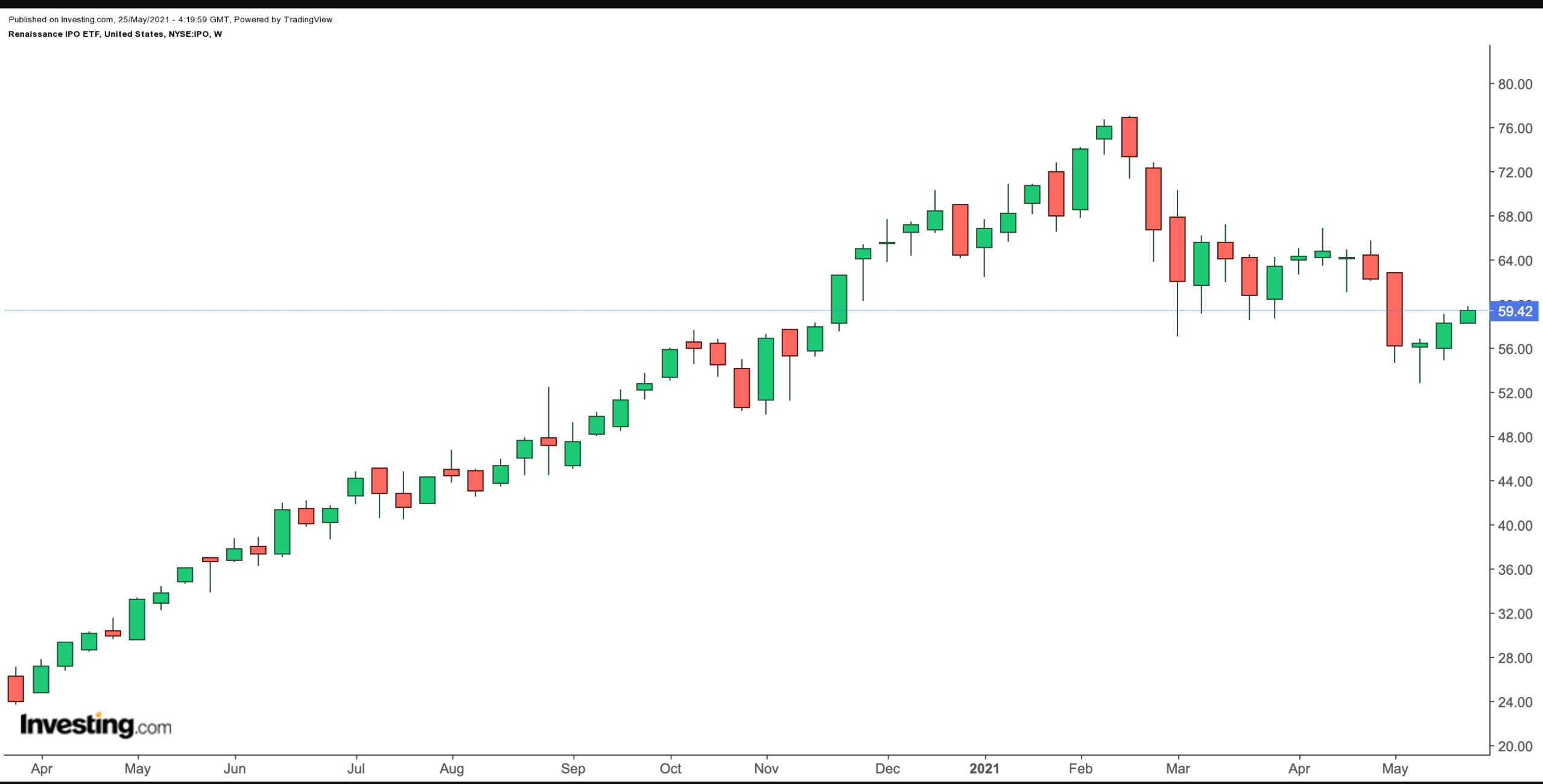Investing in special purpose acquisition companies (SPACs), does not feel as glamorous lately. 2020 will possibly be remembered as the year when investors’ risk appetite for SPACs hit a high.
Yet the picture in 2021 is different, as many of these businesses are off their all-time-highs (ATHs). We previously discussed the basics of going public with a SPAC reverse-merger. Today, we’ll revise the topic to see if an exchange-traded fund (ETF) in the SPAC space could be appropriate investment at this point.
Going Public Via SPACs
Most companies go public through an initial public offering (IPO). SPACs provide an alternative, usually a faster method for private companies to become listed on a stock exchange.
SPACs are blank check companies with funds sitting in escrow until they announce a reverse-merger with a private company. Most of these SPACs initially trade around $10.
As soon as the rumour mill concerning a potential acquisition candidate gets going, the share price usually shoots up. Upon the completion of the merger, fundamental metrics of the new entity become important. Investors understandably want to know whether the company will be able to generate revenue, and preferably profits that create long-term shareholder value.
2020 saw a total of 248 SPACs completed. Within the first five months of 2021, we already have 325. Several of these recent SPACs include:
- Adapthealth Corp (NASDAQ:AHCO)—down 33% year-to-date (YTD);
- Apex Technology (NASDAQ:APXT)—down 32% YTD;
- Betterware De Mexico (NASDAQ:BWMX)—up 25% YTD;
- Clover Health Investments (NASDAQ:CLOV)—down 59% YTD;
- Fastly (NYSE:FSLY)—down 49% YTD;
- Luminar Technologies (NASDAQ:LAZR)—down 37% YTD;
- Lordstown Motors Corp (NASDAQ:RIDE)—down 52% YTD;
- Open Lending(NASDAQ:LPRO)—up 3% YTD;
- Repay (NASDAQ:RPAY)—down 14% YTD;
- Skillz (NYSE:SKLZ)—down 24% YTD;
- Stem (NYSE:STEM)— up 8% YTD.
As the returns above show, the year has not been good to investors in most SPACs and many of these newly-merged companies have come off their recent record high prices.
Against that background, let’s see if investors could consider buying an ETF to invest in companies that have gone public in recent months.
1. Defiance Next Gen SPAC Derived ETF
- Current Price: $24.46
- 52-Week Range: $22.10 - $35.08
- Expense Ratio: 0.45% per year
The Defiance Next Gen SPAC Derived ETF (NYSE:SPAK) has 211 holdings. It tracks the Indxx SPAC & NextGen IPO index, which provides exposure to newly listed SPACs, ex-warrants, and IPOs of the preceding 36 months. The fund is rebalanced quarterly.

SPAK started trading in late September 2020. The top ten names make up about 30% of net assets, which are over $56 million. Digital sports entertainment and gaming company DraftKings (NASDAQ:DKNG), analytics company Clarivate (NYSE:CLVT), integrated payments platform Paysafe (NYSE:PSFE) and Opendoor Technologies (NASDAQ:OPEN) are among the leading names in the roster.
Potential investors should note most of the top holdings have already finalized the reverse merger with a SPACs.
So far in the year, the fund, which hit an ATH in February, is down 16%. We believe the recent sell-off in SPAK as well as similar ETFs that focus on SPACs has improved the margin of safety. Interested buy-and-hold investors could start building a position around these levels.
On a side note, the two other ETFs that focus on SPACs are:
- SPAC and New Issue ETF (NYSE:SPCX)—up 9% YTD;
- Morgan Creek - Exos SPAC Originated ETF (NYSE:SPXZ)—down 19% since its inception in late January 2021.
2. Renaissance IPO ETF
- Current Price: $59.42
- 52-week Range: $33.78 - $77.05
- Expense Ratio: 0.60% per year
For those investors who would like to invest in the more traditional initial public offering route, there are several ETFs available. The Renaissance IPO ETF (NYSE:IPO) provides exposure to a range of companies that have recently completed an IPO and are listed on a US exchange. IPO, which holds 63 companies, follows the Renaissance IPO index.

This index includes companies that meet various liquidity and operational screens in the initial days of trading. Businesses that have been public for two years are removed from the fund. Such company reviews are conducted quarterly.
The most important sectors (by weighting) are Technology (39.0%), Communication Services (31.1%) and Real Estate (23.7%). The top ten holdings make up slightly over 53% of total net assets of $522 million.
The largest five companies include Zoom Video (NASDAQ:ZM), ride-sharing app Uber (NYSE:UBER), cloud-delivered protection solutions provider Crowdstrike (NASDAQ:CRWD), crypto exchange Coinbase Global (NASDAQ:COIN) and interactive fitness platform Peloton Interactive (NASDAQ:PTON).
Year-to-date, the fund has lost 10%. Like SPAK, IPO also saw an ATH in February. We believe a further decline toward $55 would improve the risk/return profile of the fund.
Finally, there are other funds that provide access to IPOs. They include:
- First Trust International Equity Opportunities ETF (NASDAQ:FPXI)—down 4% YTD
- First Trust US Equity Opportunities ETF (NYSE:FPX)—down 2% YTD
- Invesco S&P Spin-Off ETF (NYSE:CSD)—up 16% YTD
- Renaissance International IPO ETF (NYSE:IPOS)—down 1% YTD
We’ll cover several of these names in the coming days.
